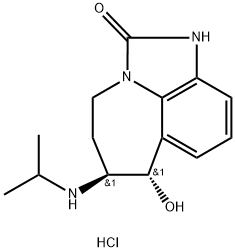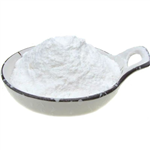Description
Zilpaterol is a β-adrenergic receptor agonist that putatively through activation of protein kinase A increases protein synthesis in skeletal muscle fibers, as well as reduces lipogenesis and increases lipolysis in adipose tissues. It was approved by the FDA in 2006 as a veterinary food additive for the purpose of increasing lean body weight and improving feed efficiency in commercial beef cattle.
Definition
Zilpaterol hydrochloride, (±)-trans-4,5,6,7-tetrahydro-7-hydroxy-6-(isopropylamino)
imidazo[4,5,1-jk]-[1]benzazepin-2(1H)-one hydrochloride; (zilpaterol HCl; CAS No. 119520-
06-8), is a β2-adrenoreceptor agonist repartitioning agent (FAO, 2013). It is used to increase
rate of body weight gain, improve feed efficiency and increase carcass muscle ratio in cattle
fed in confinement before slaughter . There are four enantiomers of zilpaterol HCl. The product
in use is racemic trans-zilpaterol HCl, a mixture of the (6R,7R) and (6S,7S) enantiomers.
Materials Uses
Zilpaterol hydrochloride is marketed as a compound that will increase rate of BW gain, improve feed efficiency, and increase carcass leanness in cattle fed in confinement systems. Zilpaterol hydrochloride has also been shown to increase weight of gross primal and boneless closely trimmed primals, and boneless closely trimmed retail cuts as a percentage of carcass weight, when carcass weights were held constant (Plascencia et al., 1999). Additionally, slaughtering a lot of cattle on the same date can be problematic and may require longer than expected withdrawal periods and may result in withdrawal periods in excess of 3 d.
Solubility in organics
Zilpaterol hydrochloride is very soluble in water and in other aqueous media
(about 50% of product dissolved) at different pH values (1–10). It is only slightly soluble in
methanol (about 3%) and practically insoluble in most organic solvents (<0.1%) such as ethanol, acetone, ethyl-acetate, isopropyl ether, hexane, toluene, chloroform,
dichloromethane or n-octanol.





